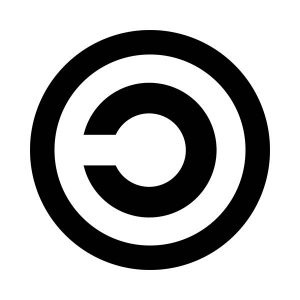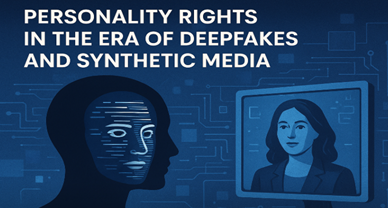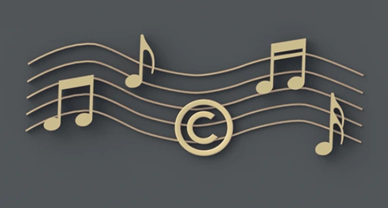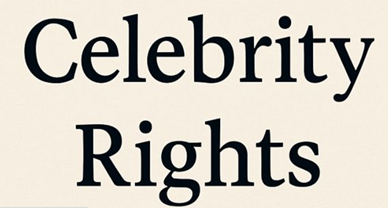Copyleft: A Step after Copyright!
Introduction

Transpired from the radical activism of the free software movement which is responsible for bringing the programmers from all around the globe under one roof, against the backdrop of the Internet, new technologies, and the intangible properties, Copyleft is an agreement promoting free sharing of ideas and knowledge with an objective to encourage inventiveness. The concept of Copyleft was given by Don Hopkins and was further popularized by Richard Stallman in the 1980s.
Copyright
Copyright is a bundle of rights granted to a creator providing him with exclusive rights over his original artistic and literary creation. It is not necessary that a copyright be registered, it is attached automatically to any original artistic work. When the idea of a creator is converted to a material form, the same immediately gets protected under the copyright. For a work to be copyrighted, it is necessary that the work is original work of literature, drama, music, or any other art having artistic value. While copyright protects the material form of an idea it does not protect the idea in itself. It is essential and of significant importance, that permission is sought and the same is granted by the copyright owner before it is republished or reproduced.
The bundle of rights granted to the copyright owner includes the rights to reproduce, copy, publish, communicate, and translate the copyrighted work. Such a right is a natural right granted to the owner of the artistic work immediately on the making of the same.
Copyleft
Most of the creative works, including software programs and codes, comes within the domain of copyright protection and therefore can be copyrighted. However, it is to be noted that software and programming is an area where already existing programs many-a-times are used as a base to build new software or program. It is for this reason, many software owners tend to grant a license to its users a license allowing them to modify and alter their work. Such permission and license can be referred to as Copyleft.
Copyleft can be said to be a specific kind of a license that allows free use of copyrighted material but under certain terms and conditions, granted by the owner of the copyright himself. For instance, software having a copylefted license can be modified, used, distributed, or reproduced provided the source code kept open and available to the public. A copylefted software must be transferred with a similar copyleft license to all its successive users and the license also shall mandate any modification to the software shall be copylefted in a similar manner. In simpler words, copyleft is a license that provides original work to a third person giving him certain rights like that of copying and modifying and any new work carved out based on such original work shall have a copyleft license in a similar manner.
The main objective of a copyleft license is to provide people with opportunities to use and modify an original work, and later grant a similar set of rights to all other interested people. Thus any person who receives a copylefted work and then modifies the same, he cannot restrict the rights to himself alone over the modified work.
The concept of copyleft came as a refreshing idea on the free movement of workers. It broadens the area by not just restricting the rights over the work to a single individual or a small group of people but including all the people having an interest in the work and are ready to comply with the conditions of the copyright license agreement.
In the case of Copyleft, the original work can be first copyrighted by the author, and then third parties can seek to use the distribution terms and clauses that enable them to use, modify and also redistribute the codes and programs provided that no changes are made in the documentation terms. This process makes sure that even when the source code is being transferred and shared, people would know the original author of the same. The original and the modified work remains free and the right to modify such work rests with all those people who find interest in the same. Any programmer who uses and modifies a copylefted program or software is having a right to share and reproduce it but not to sell it commercially and earn profits out of it. Linux based applications are classic examples of copylefted open-source software.
Generally, a copyleft license lasts for as long as copyright rests in the original work of the author. Copyright protection rests in the artistic work of the author for a period of 60 years after the death of the author, after which the work passes into the public domain. Once the work is in the public domain, the same can be used by anyone without the need for any license.
The first-ever copyleft license was made by Richard Stallman and was called the GNU General Public License. Share Alike can be also be cited as an example of a copyleft license developed by Creative Commons.
Copyleft v. Open Source Software
In the case of open-source software, though the source code is made available in the public domain, it is not necessary to make a commercial product the developer has to release the complete product code. In open-source software, the modification and advancements so made need not be followed by a similar license. However, in the case of copylefted software, any modification made to the software must be accompanied by a similar copyleft license agreement so that the modifications cannot be copyrighted giving an individual exclusive right over it.
Copyleft: A Legal Concept Beyond Copyright
Starting from the internet and the world of computer programs, the concept of copyleft is spreading across the other field of work and knowledge. Copyleft licenses are now variedly accepted and adapted in the field of art, literature, and science also. Scientific researches having the prime motive of spreading knowledge, advanced innovations, and authorship of the work and invention, finds copyleft license to be an appropriate tool for the same.
A school of thought is of the view that the concept of copyleft is based on the fundamental rights of the people including the right to culture and right to education. Further, according to them, there are various constitutional and other values that prove, support and establish the same.
However, the legality of the copyleft license agreement was a point of a question for a long time. But, after the case of Artifex Software V Hancom (Case No.16-cv-06982-JSC (N.D. Cal. Sep. 12, 2017) the stance regarding the legality of a copyleft license is clear. In this particular case, the copyleft GNU-GPL license has been given recognition in the eyes of law. The decision of the case was such that the defendant was made to share the modified version of the Copylefted software. This decision is a positive sign for all other individuals and creators who are interested in making free licenses like Copyleft for their work.
Conclusion
Copyleft is an option derived within the domain of copyright laws itself, providing a little bit of freedom and liberty, that allows users to modify and distribute the software and the program, which was surely not possible with the traditionally copyrighted programs. It would not be wrong to conclude that the concept of copyleft will create communal ownership of several individuals within the confines and limitations of copyright laws.
In this digital era, copyrights have become restrictive and outdated. Copyleft provides the users of the internet domain the necessary freedom and liberty to design and program software of various diversified cultures. The use of various programs and software is important to develop the world of computer programming. Thus, it is recommended that if not all then at least the digital world be governed by the copyleft licenses.
About the Author: Sonal Sodhani, BA LLB student from Bharti Vidhyapeeth, Pune, Intern at IP and Legal Filings, and can be reached at support@ipandlegalfilings.com.


